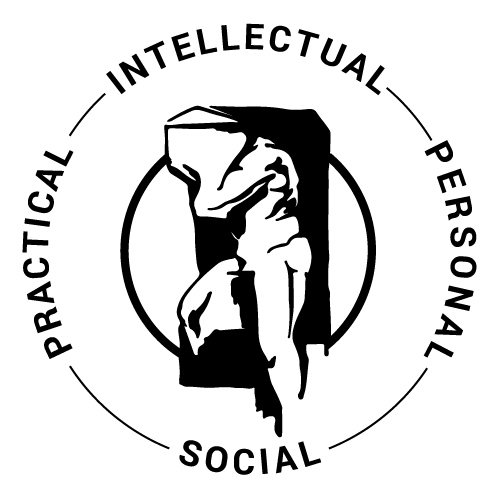“What I cannot create, I do not understand.” — Richard Feynman
More and more jobs today are being automated—from automations that are basic such as order-taking to complex judgments such as facial recognition. If you don’t want to be left behind, it’s your creativity that will keep you employed! Machines, however smart, just can’t do what YOU can.
Being able to connect and interrelate, that is, “integrate” knowledge across broad ranges of subjects is a characteristic of creativity and versatility—one that is distinctly human, too.
Research consistently finds that highly creative people tend to have very broad, as well as deep interests and knowledge. They apply unconventional information and ideas to problems, integrating information in unusual ways across conventional subject areas.

Famed, path-breaking physicist Richard Feynman is a case in point. He had wide-ranging interests, which included samba bands and experiments on ants. He put no limits on his curiosity about the world.
One particularly impressive example was his brilliant demonstration of why the Space Shuttle Challenger’s O-Ring blew up after launch.
Feynman simply and directly proved the tragic Challenger’s accident was caused by a deficiency in the O-ring’s ability to stand up to the low temperatures on the day of the launch. How? During a Congressional inquiry, he dropped an O-ring into an ordinary glass of ice water and it cracked. His demonstration integrated an esoteric, bedeviling engineering problem with a mundane experience.
Feynman’s measured IQ was in the high range—124—but not what IQ test-makers consider genius (135+). Contrary with what many people think, but consistent with research findings, most recognized geniuses do not have IQs in the 135+ range. Measured IQs of people considered to be geniuses are 116 or higher, apparently making an above average IQ a condition—but not a sufficient one—for high creativity. (Csikszentmihalyi, Creativity).
By the way–no one knows how acclaimed geniuses, such as DaVinci and Newton, would have scored on the test. Given the findings with current individuals, the results of an actual IQ test on Newton might surprise us!
Unfortunately, IQ tests—and most tests—cannot measure working creativity and intelligence. In other words, they don’t adequately measure how intelligence is put into life’s service by creatively solving problems. And this ability is key to success on the job and in life.
For example, the number of highly creative and successful business people who score average to low on SAT tests is indicative of the test’s inadequacy in measuring working intelligence. (Stanley, The Millionaire Mind)
Characteristics other than IQ are critical to the development of creativity, characteristics which we can nurture in the right educational setting. We can actively develop creativity, rather than stifle it! For example, we can encourage first-hand observation over simply listening to what teachers have to say. First hand observation enables you to notice and know directly all kinds of things about the world that others may have missed, characteristics that might be critical to coming up with a creative solution. In this way, we can put to rest the idea that creativity is an inborn quality. Instead, we all have the capacity to develop our creative faculties.

From youth, Michael Faraday exhibited this tendency par excellence: he had no formal education and knew only arithmetic, but discovered the laws of electromagnetism through fascinated observation of and experiments on nature. Even though he wasn’t formally educated, Faraday’s ingenious discoveries led leading British scientist Lord Kelvin to engage Faraday as a scientist in Kelvin’s lab. Faraday is recognized as the founder of the electro-magnetic branch of physics.
This can happen today when an unknown person comes up with astonishing discoveries on his or her own!
A mind that is curious and constantly problem-solving is another characteristic of the creative. For example, the inventor of VELCRO, George Mestral, noticed that his dog became covered with burrs during a walk. Examining that the burrs use microscopic hooks to stick to the loops of his pant fabric, Mestral realized he could make a new type of fastener. A little nature hike turned into a billion-dollar industry.
What’s needed in education to develop creativity?
“Our care of the [student] should be governed, not by the desire to make him learn things, but by the endeavor always to keep burning within him that light which is called intelligence.” — Maria Montessori
We cannot change what nature gives us in terms of basic intelligence. However, we educators can offer a program that nurtures those abilities and habits of mind needed for creativity and productivity such as:
- Observational, deductive, and integrative reasoning skills, not just in science and math, but all domains of knowledge, including such areas such as art, history, and literature.
- Learning a broad array of information and ideas, ancient and modern.
- Habits of connecting information and ideas from one domain of knowledge to
another (the way highly creative people do).
Teaching through original texts that examine knowledge across domains helps nurture creativity by example, works like Adam Smith’s The Wealth of Nations, a work of history and social policy that revolutionized the study of economics, or Plato’s Meno, which examines history, epistemology, and social interaction.
Guiding you to draw cross-disciplinary connections by examining the world around us is another way. Drawing attention to the way a city’s buildings and layout are related to its history or learning how original thinkers made crucial connections, such as Newton’s connection of the idea of gravity with the apple’s fall.
Curiosity can be nurtured through:
- Encouraging individual questions
- Modeling enthusiasm and inquiry about what is being studied (as well as every other subject!)
Careful observation of the world is developed through:
- Demonstrating careful observation and the relation of any idea to the facts on which it rests
- Questioning the observational/factual basis of any idea
- A curriculum infused with deep questions which connect knowledge to living by:
- Always asking what any given fact or idea means to human life
- Asking of any knowledge: to whom is this information valuable and how will it be used?
Spark your curiosity today! Join a Great Connections program.



